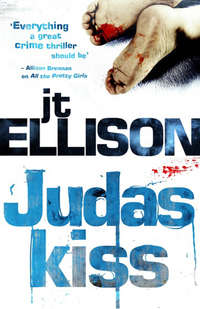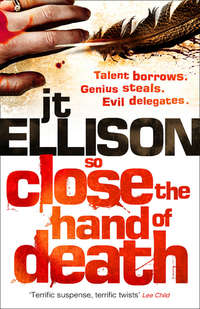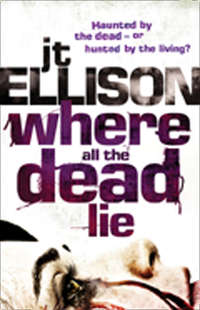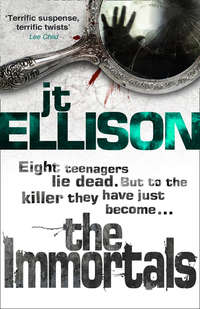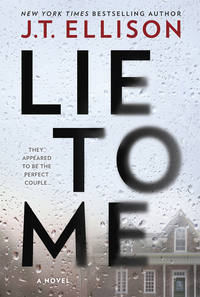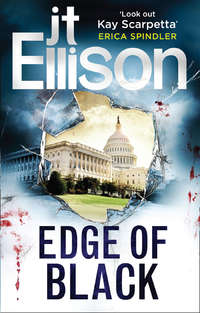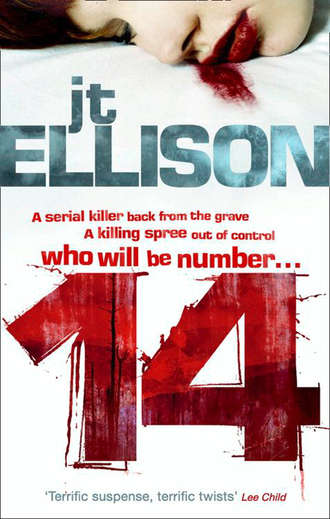
Полная версия
14
The rooms within were filled with gaiety and love. A warm fire crackled in the hearth, the house was decorated to within an inch of its life with red and green—popcorn and cranberry strings, garlands, paper rings. Sabrina led the way to the kitchen, where the aroma of pumpkin pie and gingerbread wafted. She announced their visitors to the two people in the room.
“Gran, Grampy, this is Taylor and her friend Fitz. Grampy, they say they have an appointment with you. Are you ready to see them?”
Martin Kimball turned to his granddaughter with a glint of amusement in his eye. He reached out and grabbed her by the waist, swinging her into his arms as he stood. The waif reined in, he smiled at his old friend Fitz, nodded politely to Taylor.
“Well, well, well, look what the cat dragged in. Pete Fitzgerald and his lovely lieutenant. What can I do for you fine folks today? We’ve got a lot of pie, and we’re building a gingerbread house for Sabrina. Plenty of gumdrops hanging around. Care to help?”
Fitz looked wistful for a moment; Taylor knew his love of sweets was undermining his willpower. He gathered himself, a pillar of strength and resistance. If retirement meant a warm, loving home and a happy family, it didn’t look all bad. But Fitz had never married, didn’t have this built-in infrastructure to keep him satisfied.
“Wish we could, Marty. We need to talk. You got someplace private where we can chat?”
“Sure, we can go in the den. Here you go, sugar.” He handed off the child to his wife, a cheery-looking woman with red cheeks and a plump chin.
“Don’t be too long, Marty. The gingerbread is about ready.”
He kissed her on the forehead, patted the child’s hair, then signaled to Taylor and Fitz to follow. He went the length of the kitchen, through a swinging door and into a short hallway. The first room on the right was a small, cozy office/den, the blue-and-white choo-choo-train border along the ceiling giving away the space’s previous employment as a child’s bedroom. There was a plush, soft chocolate chenille couch and a cherry desk with two ladder-backed chairs on either side. Three weathered brown corrugated boxes sat on the desk. They bore the mark of private evidence files. All investigative cops had one or two stashed away.
They got settled, Taylor and Fitz on the couch, Kimball leaning against the desk. Taylor took the chance to size the man up.
Kimball’s hair was gray, cut in a military-style bristle top. His face had a permanently mournful expression, his eyes hangdog. His clothes were old-fashioned, from a previous generation. He wasn’t old, but he was certainly not doing anything to make himself seem any younger than his sixty-four years.
He was soft-spoken, and Taylor imagined he’d been a shy man once, with jug ears and a slow, sad smile. Retirement had eased some of the pressures on his mind, but the years were etched on his face. He’d seen too much, witnessed too many vicious crimes, to have a smooth, carefree aspect. He stooped slightly, and Taylor wondered if it was the weight of all he had seen in his years on the force.
Fitz had told Taylor that Kimball was the detail man of the old homicide unit, the one attuned to every nuance and ripple in a case. He was the homely one, the man any victim would confide in, the man every criminal confessed to.
He rested against the desk and waited for them to speak. Just like the old days, she assumed. No sense pushing an issue if it was going to come to you, anyway.
Satisfied they were in good hands, Taylor started. “We wanted to talk to you about the Snow White murders. The early ones. We’re pretty sure these new ones are a copycat, but you’d be the best person to confirm that with. The DNA isn’t back yet, but you know this guy. You can tell us if it’s him doing these crimes or if it’s someone else.”
“Okay.” Kimball walked behind them and shut the door. No sense in scaring his granddaughter if he could help it. Fitz got up and examined his friend’s bookshelf, whistling softly.
Kimball reperched himself on the edge of the desk. “What do you want to know?” He held up a hand. “No, let me ask you something first. Why do you think this is a copycat?”
“To start with, the wound tracks are inconsistent. Snow White was left-handed, you confirmed that with all the original autopsy findings. This guy looks like a righty trying to make himself look like a southpaw. He’s cutting them from the front instead of from behind. There are two other major discrepancies—the news articles placed in the vaginas, and there’s a cream on each girl’s temples. It looks like it’s arnica cream, and we’ve found the composition includes frankincense and myrrh. We can’t be sure that the substances are combined or separate just yet, but regardless, it’s a big deviation from the original murders. We’re tossing around the idea that this might be some sort of religious ritual.”
“So there’s no hair evidence?”
“You mean at the scenes? Not that we’ve found.”
“No, I mean the new victims’ hair wasn’t pulled out at the roots like the first girls’?”
Taylor and Fitz exchanged a glance, and Fitz answered, “Not that we’ve come across, no.”
Kimball went to the boxes on his desk, flipped the lid off the center box, slipped on a pair of gold-rimmed reading glasses. He thumbed through the center of the files and pulled out a manila folder marked Photos. He paged through until he reached one he liked. He held it out for Taylor to look at.
“That picture is of the back of Vivienne White’s head. See that little bald patch? We always figured he was yanking their heads back so hard that he pulled the hair out at the roots. It was the same for all ten girls. A bald patch, right at the nape of their necks. I don’t know about any cream being found on the bodies, but the missing hair was a big deal for us.”
Taylor’s lips were pursed. “That wasn’t in the files.” She looked at Kimball then, a mean thought niggling her mind. She hated to think the worst, but it had happened before.
“Kimball, is there something we’re missing? Are our files incomplete?”
He raised an eyebrow. “I can’t answer that for you. That’s why I pulled these from the garage, just in case. You know how it is. Files get lost over time. The case is twenty years old. You’re welcome to these, if you want. Compare and contrast.”
“I appreciate that.”
Kimball circled the desk, sat in his leather chair. He pulled out a pipe and loaded it up. The scent reminded Taylor of her grandfather, a man she hadn’t known very well. When she looked in a mirror there was a likeness, and when she felt her temper rise, she knew it was his anger.
“Anything else top your list?”
Taylor smiled. The man was still as sharp as ever.
“Tell me. Why did they name him Snow White?”
Kimball smiled, then turned and went to the bookcase. He ran his fingers along the spines on the third shelf from the bottom, the wood just high enough that he didn’t need to bend over to read the titles. He made his selection, a tattered, beaten book that looked quite old.
He turned back to them. “That was my fault, I’m afraid. My daughter, Stacy, Sabrina’s mother, was a little girl when the first murder happened. I was reading to her before I tucked her in, a ritual I tried to maintain even when I was working the B-shift on Homicide. I’d read, get her to sleep, then go to work.”
He fingered the cover of the book. Taylor could see that the edges of the pages were gold.
“Well, this was the story I’d read to her that night. It was snowing hard, and I got to work thinking we’d have a slow night. Instead, we got called to the lot behind the old Chute Complex, those gay bars out in Melrose. You know where I’m talking about, off Franklin Road? It’s all built up now.”
Taylor nodded.
“That was Tiffani Crowden’s final resting place. I got on the scene and saw her, lying there in the snow. The story popped right into my head.”
He cracked open the book. No bookmark was necessary; it opened to the page he wanted. The words he read made a chill spread through Taylor’s body.
“‘Once upon a time, when the flakes of snow were falling like feathers from the sky, a queen sat at a window sewing, and the frame of the window was made of black ebony. And whilst she was sewing and looking out of the window at the snow, she pricked her finger with the needle, and three drops of blood fell upon the snow. And the red looked pretty upon the white snow, and she thought to herself, would that I had a child as white as snow, as red as blood, and as black as the wood of the window frame. Soon after that she had a little daughter, who was as white as snow, and as red as blood, and her hair was as black as ebony, and she was therefore called little Snow White. And when the child was born, the queen died.’”
Kimball closed the book, cleared his throat. “Fitting, really.”
They were silent for a few beats. Taylor was the first to venture in. “Wow. I had no idea.”
Kimball offered her the book. She took it and glanced at the cover. Fairy Tales of the Brothers Grimm.
“That was my copy from when I was a boy.”
Taylor met Kimball’s eye, gave the book back. “Thank you. This helps. Did you ever think that he’d read the story and was trying to re-create the scenes?”
“Sure. Made perfect sense. Too perfect. I always thought there was more. Hate. Lust. Power. All excellent motives. But why does any killer develop his MO? Maybe Snow White’s mother read to him before she went to work. Maybe he had someone who he read to, and lost her? Attaining the unattainable, always a rich source for motivation. We won’t know unless we catch him, ask him.”
“Can I ask you about the note he sent you? I’m curious about that.”
“Smart girl. I bet you are.” Taylor took the praise and realized she would have enjoyed working with this man, had she ever gotten the chance.
He puffed, sucking the fire into the tobacco, ruminating. “That damn note. I swear, we went over it and over it. Didn’t have all the fancy tests y’all have nowadays, but we could do a fair amount of work back then. The computers were young, and the printers weren’t as plentiful. Just the fact that it came off a computer told us something. He was well-off. It came from an IBM 8580, PS/2 Model 80 386, one of those early desktops, and the printer was a Hewlett-Packard Deskjet Inkjet.”
Fitz shook his head. “You remember that offhand?”
“Yeah.”
Taylor was beginning to understand the reputation Kimball had acquired as the detail man. He continued his recitation.
“Top-of-the-line printer, too. Those things were a thousand bucks a pop when they first came out. At the time, not too many people here in town had one. We traced the ownership, came back to a fellow in Green Hills, man by the name of Mars. Wasn’t him doing the killing, but it was his computer that the note got written on, his printer that spit it out.”
Burt Mars. Taylor knew that name. He was a friend of her parents. An accountant, if she remembered correctly.
“But it wasn’t Mars who wrote the note, right?”
“We never could prove it was him. Never thought so, either. He just didn’t seem capable of pulling off something so elaborate as ten murders. Now, he could bilk Uncle Sam out of a pretty penny, I’ll give him that. No, we always thought it was one of his clients. Someone who had access to his office.”
“Why a client? Why not an employee?”
Kimball gave her a look, then smiled at Fitz, who had rejoined Taylor on the couch. “Because whoever this guy was, he had money. Now, Mars was a generous guy, but not that generous. His employees didn’t have the cash flow that Snow White did. No, it was one of Mars’s clients, all right. Someone who paid other people to do his work for him. I’ve always been confident about that.”
“Why? What was so special about him that you think he came from money?”
“The signet.”
Taylor shook her head. “What?”
“The signet ring. Jesus, that wasn’t in the files, either?”
“I know nothing about it. Fitz, what about you?”
“Don’t remember anything in there about a ring.”
“Found it at one of the last scenes, let’s see, I believe it was Ellie Walpole. When they rolled the body, the ring was caught in her hair. It was a gold ring, scroll work on the sides, big sucker, with a monogrammed F in the crest. That’s all. Just an F. We went through Mars’s files with a fine-toothed comb, interviewed every single person whose name started or ended with an F. Didn’t get anywhere, but that didn’t mean too much. It could have belonged to the killer’s parent, grandparent—hell, cousin or friend, for all I know. It looked old, like it might have been passed down, you know what I mean?”
“Now, that isn’t in the files, I know that for sure. I went through all of the evidence by hand three weeks ago when we pulled some of the boxes for our investigation. There’s nothing about a signet ring. And nothing in the interviews about a ring, either.”
“Don’t know what to tell you, LT. It was there. Saw it with my own eyes. I wrote a lot of those reports myself—that’s why I know they were there. I’m getting the feeling you aren’t working with a full deck on this one.”
Taylor looked at Fitz. This was a problem.
Kimball took a last puff on his pipe, emptied it out in a clay ashtray that looked homemade, and stood.
“You can take these files, just be sure you get them back to me in one piece, okay? I want to go be with Sabrina now. We don’t get to see her as much as I’d like, and she’s growing up too fast. Pretty soon she won’t have any desire to make gingerbread houses with Gramps, you know?”
Fitz carried two boxes, Taylor one. Kimball escorted them out through the kitchen, where Mrs. Kimball and Sabrina stopped them and put cookies wrapped in foil on the tops of the boxes, a treat for later. Kimball saw them to the door, a sad smile on his face as they drove away.
Taylor was three feet tall and fit perfectly into the space between the banister and top step, slightly shrouded by a Doric column that abutted the crown stair. She could see the ball going on below her. There seemed to be hundreds of people, all dressed in the most elaborate of costumes. It was New Year’s Eve, her parents’ traditional masquerade ball, though the house and environs were new. This was Taylor’s second home, but the only one she ever remembered.
The music was loud, and the people twirled around like marionettes, flutes of champagne disappearing at an alarming rate—tuxedo-clad waiters circling the foyer and ballroom, keeping the guests well supplied.
A woman in a large Marie Antoinette wig, powdered face, a black triangle patch meant to be stuck to the corner of her mouth askew and half-unglued, sat down hard on the bottom step—a full forty-seven steps away from Taylor in her little hiding place. Her mother was dressed as Marie Antoinette, but this wasn’t her mother. Taylor felt the concussion of the woman’s sudden not-quite fall, smelled the alcohol waft up the stairs mixed with another scent, a powdery musky smell.
Three people rushed over to make sure she was okay, but she giggled and shooed them, assuring them she’d purposely taken a seat to rest her weary feet. After three waiters had helped her up, she waddled away, dress swinging precariously.
Then there was quiet for a few moments before her father and mother came into view, several people at their heels.
The women were simpering back and forth to one another, but the men talked loudly, expansive with drink.
“Win Jackson, you’ve obviously made a deal with the devil,” a dark-haired man brayed.
“Yeah, Win, your own little Manderley, is it? What did you do in a past life to get so goddamned lucky in this one? The judge should have thrown you in jail, not dismissed the charges.” A sandy-haired man with thick black glasses smacked her father on the shoulder. Win laughed.
“Manderley? Shit, let’s just hope the place doesn’t burn to the ground. Kitty would have my head.”
And so they went, on and on, poking and gibing at one another, until Taylor’s governess found her and snatched her from under the curved balustrade, shuttled her back to the nursery.
Taylor squeezed her eyes shut, trying hard to place the moment, the spot where one of the men turned….
“Jesus, Taylor watch out!” Fitz shouted.
She opened her eyes, disoriented to see the road in front of her, her hands on the steering wheel of the truck, and a small car swerving through a slide on the ice right into her path. The ballroom was gone. She swung the wheel lightly to the right, steered into the slide and scooted around the Camry, which righted itself and slowed, creeping away in her rearview mirror.
Something there, she thought to herself. Something there. But the memory was lost in the glare of the snow.
Seven
Quantico, Virginia Tuesday, December 16 10:00 a.m.
Charlotte Douglas knew how to enter a room.
She preferred to do it late in the evening, wearing Valentino or Cavalli, delicate feet strapped in some fanciful creation by Louboutin or Blahnik, on the arm of whatever delicious flavor of eye candy she’d chosen for the evening. To stop just inside the doorway for a priceless moment, giving every head the chance to turn and take in her glory. Once all eyes were upon her, she’d glide in, smiling, touching an arm here or a buttock there, depending on the level of intimacy she had with the player involved. The sea of men would proverbially part to allow her access, champagne would magically appear and the evening was instantly considered a success.
She generally reserved those shenanigans for the high rollers: senators, congressmen, people who had funding levels under their watchful command. She had an image to project—glamour, posh and publicly unattainable. It drove the power-hungry men in Washington wild, assured her of a place at most every event of significance.
But she couldn’t be on the A-plus list all of the time; she needed to finesse the peons, as well. She’d never waste her couture on them, designer fare from Nordstrom was entirely appropriate. So for the dates with the underlings, the chiefs of staff and deputy secretaries, she made sure she was dressed as elegantly as possible, was perfectly coiffed and made up, and reached or exceeded their height. Charlotte had been handmade for stilettos.
The previous evening, she’d spent half the time talking to a minor Saudi prince, a full half hour with the head of the Ways and Means Committee, and shared a snippet of conversation with an NBC affiliate reporter being groomed for the network before calling it a night. Working D.C. could be awfully tiresome.
She’d pulled into the gates of Quantico at 7:00 a.m. sharp, clear-eyed and ready for the day.
She smiled to her coworkers, flirted with the maintenance man fixing the service elevator, and happily went about her morning routine. She grabbed a coffee from the break room, stepped into the bathroom to fluff her hair, then made her way down the hall, unlocked her office and turned on a gentle lamp. The glow from the environmentally friendly bulb cast a shadow on her nameplate; she moved it an inch to the right so it wasn’t obscured. There was no sense of pride when she looked at the engraving—Dr. Charlotte Douglas, Deputy Chief, Behavioral Science Unit. The “deputy” part wasn’t to her liking.
Logging on to her computer, she leaned back in her chair and picked a piece of imaginary fluff off her shoulder. The machine would only take a second to boot up; it was password-protected so she generally left it in sleep mode when she left the office for any appreciable length of time. The display flashed at her a few moments later, the FBI seal centered on the screen. She typed in her password, a carefully chosen combination of letters and numbers. L96in69gu0S. A personal joke between her and the webmaster. Who was quite talented, she’d come to find out.
Setting down her coffee mug, she’d gone trolling. Looking for unusual murders, repeat offenses, unsolved cases was time-consuming, but it had to be done. She could have reports compiled and left on her desk like the rest of the D.C. automatons—the junior staff of every department was responsible for the morning reports, pages of media items of interest to their bosses. The other profilers in her unit did just that, allowed the FBI interns to aggregate the news reports, police filings and anything else that might be relevant to keep the unit up to speed on the goings-on of their law enforcement brethren. But Charlotte preferred to look for her own information. Regardless, no one else could really gather the tidbits she was looking for correctly.
There was nothing unusual to be seen—the usual amalgamation of crazies, unsolved cases she was already familiar with, and Web sites catering to serial killers. She made a note of a new site that advertised for killers. “Contact us, tell us your most gruesome kills, here’s how to do it anonymously. WE’RE NOT COPS!” Just what they needed. The gilded information age, perfect for computer-literate sociopaths.
She continued through her prescribed protocols.
The new ViCAP updates were in. The Violent Criminal Apprehension Program’s purpose was straightforward—detect patterns within criminal activities. Charlotte used it to compile missing-person cases, unidentified bodies and sexual assaults, coordinate multijurisdictional reviews, and help to share information between often competitive law enforcement agencies. ViCAP was one of her darlings.
She opened the icon, logged in to the database and looked around. She didn’t see anything new that needed her immediate attention. Nothing out of the ordinary.
She went on to check CODIS. The Combined DNA Index System was a beauty of a tool; once they got the DNA uploaded for all the bad guys in the system it would be a lifesaver. She plugged in her pass code.
The Snow White case was her number-one priority right now, for a variety of reasons. The DNA profiles from the Nashville serial murders had been uploaded the previous evening. She’d configured the DNA submissions from the latest cases personally.
Once she was logged in, a small icon in the lower-left corner of her desktop started blinking. She opened the link and smiled. The DNA test results from the Nashville murders were back. Wonderful. It wouldn’t do to leave any stone unturned, or turned in the wrong direction.
She read through the results, combing the reports. She could turn this in to the Nashville field office immediately. Or at her leisure. Whichever fit the mood she was in ten minutes from now.
She closed the elaborate analyses and moved to a separate part of the CODIS database, where DNA profiles from unsolved cases across the country were inputted to be compared against one another. The theory was excellent, but the practical applications hadn’t caught up with the backlog of DNA analysis. Slowly but surely, the files were being uploaded into the system, but it would take years to get reality matched to the theoretical.
Two backlit icons were flashing. On the left icon, a code number that matched her uploaded Nashville DNA blinked slowly. On the right icon, the same numbered sequence glowed red. A match. A cold-hit DNA match between the Nashville suspect and … She sucked in her breath. What she was seeing couldn’t be right. There must be a glitch in the system. Having a cold hit on CODIS wasn’t a regular occurrence. More files popped onto the screen. Charlotte tapped her fingers on the desk while the rest of the icons lit up like Christmas trees. Match. Match. Match. Match. CODIS was showing four separate cold hits, from four states, not including Tennessee. All the DNA pointed to a single contributor.
Charlotte cursed.
She called the webmaster, told him there was a problem. He called her back five minutes later and assured her there wasn’t. Not on his end.
A tingle had started then. Just at the base of her spine. The databases were programmed to spit out patterns, and that was what Charlotte was seeing before her. She’d designed this section of the database herself, and now here it was. Her anomaly. Despite all her best efforts, her hand would be forced now.


